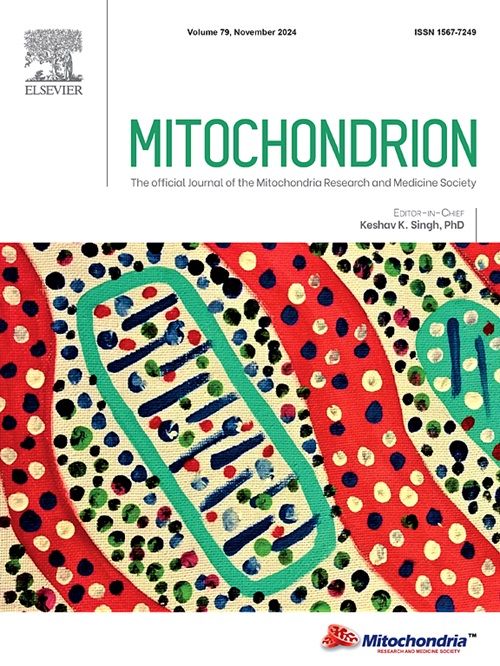线粒体移植:胜利、挑战和对核基因组重塑的影响
IF 4.5
3区 生物学
Q2 CELL BIOLOGY
引用次数: 0
摘要
线粒体是真核细胞的膜结合细胞器,在细胞功能和稳态中起着至关重要的作用,包括生成细胞能量的ATP。线粒体功能与几种复杂的疾病和失调有关,包括心血管、心脏代谢、神经退行性疾病和一些癌症。这些疾病和失调的风险通常与线粒体功能障碍有关,特别是线粒体基因组的定量和定性特征。新出现的结果暗示有丝分裂核串扰是mtDNA变异影响复杂疾病结果的机制。以线粒体为靶点的实验方法正在出现,作为几种这些疾病的潜在治疗方法,特别是以线粒体移植的形式。目前的线粒体移植方法通常涉及从供体细胞中分离健康线粒体,并将其引入患病受体,以改善线粒体功能障碍。使用这样的方案,一些报告显示线粒体移植后线粒体功能的恢复和疾病预后的改善,突出了其作为几种复杂、严重和衰弱性疾病的治疗方法的潜力。此外,可以在移植前对线粒体基因组进行修饰,以靶向疾病相关的位点特异性突变,并降低突变型与wt等位基因的比例。这些有希望的结果可能是线粒体移植对线粒体核基因组相互作用的潜在影响的基础。此外,我们建议线粒体移植实验包括对核基因组,特别是核表观基因组和转录组重塑的潜在影响的评估。在此,我们回顾了线粒体移植作为线粒体相关疾病的潜在新治疗方法的这些成就和其他挑战。本文章由计算机程序翻译,如有差异,请以英文原文为准。
Mitochondrial transplantation: Triumphs, challenges, and impacts on nuclear genome remodelling
Mitochondria are membrane-bound organelles of eukaryotic cells that play crucial roles in cell functioning and homeostasis, including ATP generation for cellular energy. Mitochondrial function is associated with several complex diseases and disorders, including cardiovascular, cardiometabolic, neurodegenerative diseases and some cancers. The risk for these diseases and disorders is often associated with mitochondrial dysfunction, particularly the quantitative and qualitative features of the mitochondrial genome. Emerging results implicate mito-nuclear crosstalk as the mechanism by which mtDNA variation affects complex disease outcomes. Experimental approaches are emerging for the targeting of mitochondria as a potential therapeutic for several of these diseases, particularly in the form of mitochondrial transplantation. Current approaches to mitochondrial transplantation generally involve isolating healthy mitochondria from donor cells and introducing them to diseased recipients towards amelioration of mitochondrial dysfunction. Using such a protocol, several reports have shown recovery of mitochondrial function and improved disease outcomes post-mitochondrial transplantation, highlighting its potential as a therapeutic method for several complex, severe and debilitating diseases. Additionally, the mitochondrial genome can be modified prior to transplantation to target disease-associated site-specific mutations and to reduce the ratio of mutant-to-WT alleles. These promising results may underlie the potential impact of mitochondrial transplantation on mito-nuclear genome interactions in the setting of the disease. Further, we recommend that mitochondrial transplantation experimentation include an assessment of potential impacts on remodelling of the nuclear genome, particularly the nuclear epigenome and transcriptome. Herein, we review these and other triumphs and challenges of mitochondrial transplantation as a potential novel therapeutic for mitochondria-associated diseases.
求助全文
通过发布文献求助,成功后即可免费获取论文全文。
去求助
来源期刊

Mitochondrion
生物-细胞生物学
CiteScore
9.40
自引率
4.50%
发文量
86
审稿时长
13.6 weeks
期刊介绍:
Mitochondrion is a definitive, high profile, peer-reviewed international research journal. The scope of Mitochondrion is broad, reporting on basic science of mitochondria from all organisms and from basic research to pathology and clinical aspects of mitochondrial diseases. The journal welcomes original contributions from investigators working in diverse sub-disciplines such as evolution, biophysics, biochemistry, molecular and cell biology, genetics, pharmacology, toxicology, forensic science, programmed cell death, aging, cancer and clinical features of mitochondrial diseases.
 求助内容:
求助内容: 应助结果提醒方式:
应助结果提醒方式:


